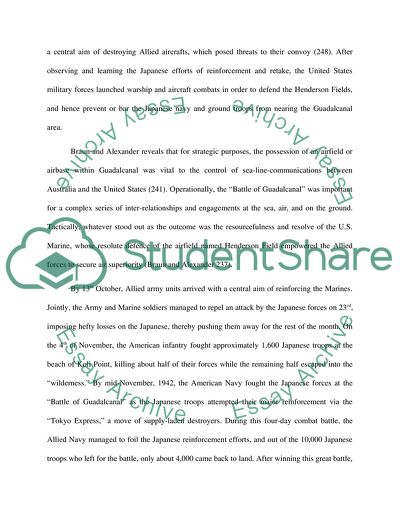Cite this document
(“The Battle of Guadalcanal Term Paper Example | Topics and Well Written Essays - 1250 words”, n.d.)
Retrieved from https://studentshare.org/military/1667733-one-key-strategic-operation-in-the-battle-of-guadalcanal-as-well-as-compare-and-contrast-the-allied-leadership-with-the-japanese-leadership
Retrieved from https://studentshare.org/military/1667733-one-key-strategic-operation-in-the-battle-of-guadalcanal-as-well-as-compare-and-contrast-the-allied-leadership-with-the-japanese-leadership
(The Battle of Guadalcanal Term Paper Example | Topics and Well Written Essays - 1250 Words)
https://studentshare.org/military/1667733-one-key-strategic-operation-in-the-battle-of-guadalcanal-as-well-as-compare-and-contrast-the-allied-leadership-with-the-japanese-leadership.
https://studentshare.org/military/1667733-one-key-strategic-operation-in-the-battle-of-guadalcanal-as-well-as-compare-and-contrast-the-allied-leadership-with-the-japanese-leadership.
“The Battle of Guadalcanal Term Paper Example | Topics and Well Written Essays - 1250 Words”, n.d. https://studentshare.org/military/1667733-one-key-strategic-operation-in-the-battle-of-guadalcanal-as-well-as-compare-and-contrast-the-allied-leadership-with-the-japanese-leadership.


